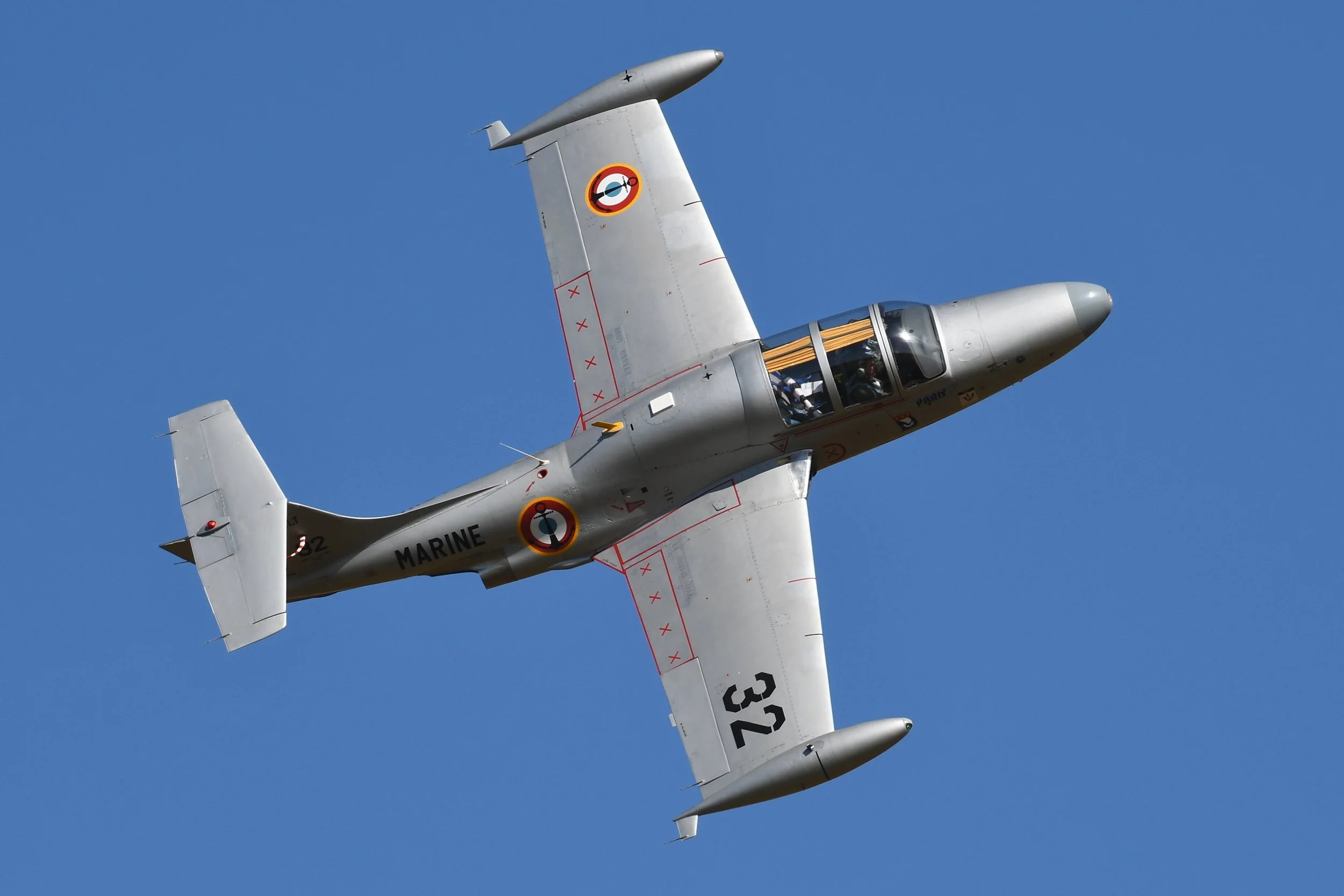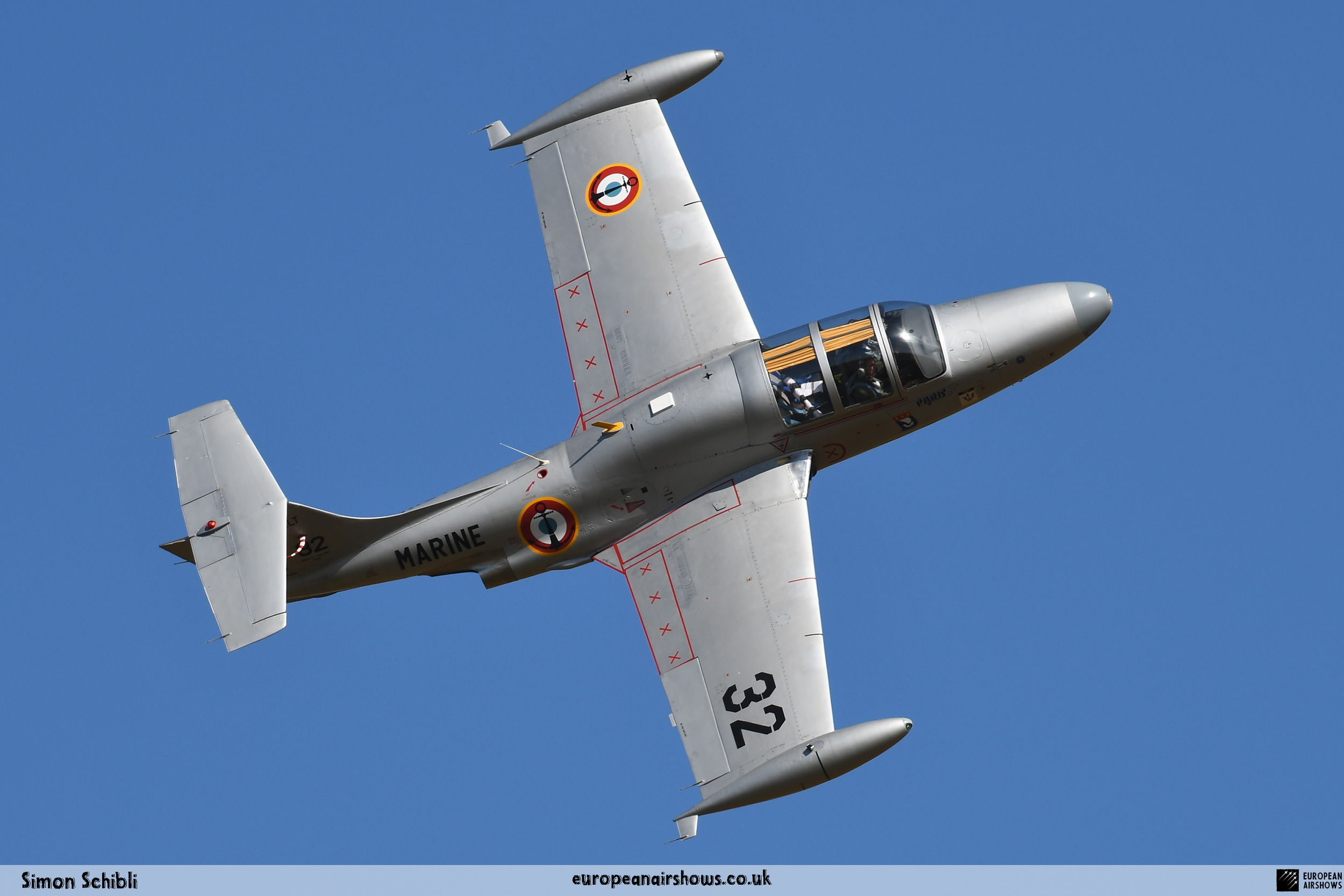
July 29 / MS.760 Paris first flight
First Flight 29 July 1954
Morane-Saulnier MS.760 Paris
The Morane-Saulnier MS.760 Paris is a French four-seat jet trainer and liaison aircraft designed and manufactured by Morane-Saulnier.
The Paris was based upon an earlier proposed trainer aircraft, the MS.755 Fleuret. Following the failure of the French Air Force to select the Fleuret, Morane-Saulnier opted to develop the design into a liaison aircraft and compact business jet. The primary difference between the two designs was the altered seating arrangement, the original side-by-side seating two-seat cockpit was modified to allow for the addition of another row of two seats to accommodate passengers. The Paris retained the flight characteristics of the Fleuret along with the option for installing armaments, which maintained its potential for use as a military trainer as well as for civil aviation. On 29 July 1954, the prototype performed the type's maiden flight.
The primary operator of the Paris was the French Air Services, which used the type for liaison purposes between 1959 and 1997. In 1955, Morane-Saulnier and American aviation company Beech Aircraft formed a joint venture to market Paris as the first business jet on the North American market, but the venture was dissolved a few years later due to a lack of customer interest. During the 1960s more advanced variants were developed such as the MS.760B Paris II and the six-seat MS.760C Paris III; the latter would not enter production however. While four-seat propeller planes are commonplace, jet-powered aircraft with this seating arrangement, such as the Grumman EA-6B Prowler combat aircraft, have remained comparatively rare.
The Paris has its origins in an earlier jet trainer aircraft developed by French aircraft manufacturer Morane-Saulnier. During the early 1950s, the French Air Force sought a jet trainer suitable to the ab initio training sector; in response, Morane-Saulnier produced their own submission, designated as the MS.755 Fleuret. However, the military competition was ultimately won by another bid, which was produced in large numbers as the Fouga Magister. Shortly after this failure, Morane-Saulnier decided to embark upon a re-design of the MS.755 to allow it to function as a four-seat liaison aircraft instead; accordingly, the new aircraft was later given the designation of MS.760 Paris.
According to aerospace publication Flight International, the adaption from the earlier Fleuret to the Paris had been largely achieved via the elimination of the former's armament, the re-design of the cabin floor to remove the downward ejection hatch arrangement, and the repositioning of the cabin's rear bulkhead slightly aft. To avoid a reduction of the aircraft's available fuel tankage as a result of the latter change, the tank was re-profiled in other areas to expand it. In spite of these changes, Paris still retained favourable flying characteristics and did not entirely foreclose its use as a trainer aircraft.
The Paris differed from the majority of liaison aircraft then in service by its use of jet propulsion, instead of a turboprop or a piston engine. According to M. Vichou, the head of the design department of Morane-Saulnier, the decision to adopt a pair of Turbomeca Marboré jet engines had been determined to be the superior option available; studies found that a single turboprop engine capable of providing at least 2,000 hp was necessary to produce a comparable performance, which would have resulted in the additional complications of appropriately accommodating a fairly large propeller in the design. Another alternative in using a pair of small turboprop engines was also less convenient than the Marbore engine, which could be positioned relatively low down in the airframe and in close proximity to the aircraft's centre line.
The all-up weight of the Paris, including a payload of four passengers and 30 kg (66 lb) of baggage, was 3,397 kg (7,470 lb) and its maximum flight speed was 650 km/hr (400 mph). According to the manufacturer, it was able to ascend to an altitude of 7,000m (22,900ft) in 18 minutes; at this altitude and at maximum continuous thrust, the aircraft had a flight endurance of 2 hours 45 minutes and a maximum range of 930 miles. In terms of fuel, the main fuselage tank contained up to 1,000 litres (220 gal), while a further 250 litres (55 gal) could be accommodated in each tip tank. A feature that was intended to be used in emergency situations was the provisioning of the tip tanks with electrically actuated valves, which enabled the rapid dumping of any remaining fuel. Actuation of the flaps dive brake and undercarriage was provided using electric motors delivering power via flexible shafts and Lear electric motors. The nose of the Paris contained much of the avionics and electrical systems, including the radio, alternators, batteries and motors. Access to the engines was provided via a completely detachable tail unit; the wings could also be similarly detached without the necessity of removing the undercarriage. The sizable main canopy was a one-piece moulding, being 8 mm (0.3 lin) thick. For increased passenger comfort, the cabin was both fully pressurized and air-conditioned.
On 29 July 1954, the prototype MS.760, registered F-WGVO (F-BGVO), took off on its maiden flight. Various features of its design, such as its T-shaped vertical stabilizer, low wing, and two Turbomeca Marboré II 400 kg turbojets internally mounted side by side within the aft fuselage, led to the aircraft being largely characterized for its inherent stability during flight. The French military emerged as a crucial early customer for the Paris, ordering a large batch of 50 aircraft to perform liaison duties for both the French Air Force and the French Navy, replacing older types such as the Nord Noralpha and Nord Norécrin. The securing of this order allowed Morane-Saulnier to proceed with quantity production of the type. On 27 February 1958, the first production aircraft performed its first flight. Early aircraft were provided with a total of four seats, two in the front and two in the back, and a retractable tricycle landing gear.
MS.760 Facts
Composite Construction: The MS.760 Paris was one of the first aircraft to feature composite construction techniques, utilizing a combination of metal and fiberglass materials in its airframe for improved strength and weight savings.
Variable Incidence Tailplane: The MS.760 Paris incorporated a variable incidence tailplane, allowing the pilot to adjust the angle of the horizontal stabilizer in flight to optimize handling characteristics and performance.
Side-by-Side Seating: Unlike traditional tandem seating arrangements in many training aircraft, the MS.760 Paris featured a side-by-side cockpit layout, promoting better communication between the instructor and trainee.
Pressurized Cockpit: The MS.760 Paris was one of the first jet trainers to feature a pressurized cockpit, providing a more comfortable and safer environment for pilots during high-altitude training missions.
Flight Recorder: The MS.760 Paris was equipped with an early version of a flight data recorder, allowing for the collection and analysis of flight parameters for training evaluation and safety purposes.
In-Flight Refueling Capability: Some variants of the MS.760 Paris were equipped with in-flight refueling probes, enabling mid-air refueling operations to extend the aircraft’s range and endurance for training and operational missions.
Cold Weather Operations: The MS.760 Paris was designed to operate in cold weather conditions, featuring engine anti-icing systems and specialized equipment to ensure reliable performance in low temperatures.
Night Vision Compatibility: The cockpit of the MS.760 Paris was compatible with night vision goggles, allowing for nighttime training operations and enhancing pilot proficiency in low-light conditions.
Ejection Seats: The MS.760 Paris was equipped with ejection seats for both the pilot and instructor, providing a rapid and safe means of escape in emergency situations during training or combat missions.
Export Success: Despite its primarily French origins, the MS.760 Paris achieved export success, with several countries outside of France acquiring and operating the aircraft for training and light attack roles, showcasing its international appeal and capabilities.




